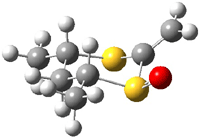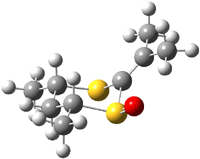I just attended Science Online 2011, an “unconference” that focuses on online tools and resources for science, especially in the social media aspect of science. A great deal of the discussions related to communication of science to the non-science community, with calls for more activism and clear voices to articulate the actions and processes of science clearly to the lay audience.
For the more technical minded, there were a few discussions of open data, data sharing, open notebook science and the like.
The conference was wonderfully organized in a great located (the Sigma Xi building in the Research Triangle Park). Bora and Anton are to be congratulated for putting together a meeting the way most of us want to have meetings – reasonably priced, meals included, buses to a from the hotels and venues, lots of time to mingle and talk, real discussion inside the sessions, etc.
Nonetheless, I came away from the meeting more depressed than when I arrived. This is a conference with a lot of younger people – I was amongst the old crowd. But I was really struck by a couple of attitudes that were quite pervasive in the rooms.
First, many people were advocating for open data and data sharing – admirable goals that I fully support. But the driving force was to make the data discoverable through Google – a decidedly non-Open organization. I was surprised by the complete capitulation to the edifice of Google. I was amazed that so many scientists (along with a slew of science journalists) who believed that Google was the way to search for science and information. In chemistry, this is so clearly not true, as specialized databases provide much better information, faster and cleaner than Google or Bing. Relying on a commercial service that is inherently not designed with science information in mind seems doomed from the start. Google is not going to be the tool for doing a substructure search. Furthermore, over the past couple of years I feel that Google has lost its mojo – when was the last time you were excited by a Google product? Google wave? and look where that is now…
Second, I was really struck once again by the very different practices, concerns, and cultures within the different disciplines of science. What chemists are doing and thinking and what they need is different than the biologists and the physicists and the geoscientists, etc. Solutions in one area will not necessarily transcribe over to another. We chemists should be thinking about what the web technologies can do for us and work for us. We might want to glance a peak at what are brethren are up to, but only for ideas and not as models to emulate.
The last observation is really much more pessimistic. I was greatly taken by the lack of risk-taking being expressed by so many people in the crowd. Academics young and old were advising to be careful with your blogging, tenure and promotion is solely driven by publications and grants, worry about a comment leading to some sort of retribution. People were advocating for the anonymous comment, the pseudonym-using blogger as a way of protecting oneself from the unnamed backlash that would destroy a career. Would we accept a journal that published articles with no attribution of the authors? Then why are we able to accept a comment to an article without an attribution? I was amazed at the view that science research communication tis solely through the journal – no thoughts on alternatives, no impetus to use new media to change how scholarly research is being conducted (except of course by the very small number of Open Notebook Science people at the meeting!). The status quo is well entrenched today and I worry that with the attitude expressed by younger scientists here, that we are doomed to continue these practices in the future. Now there was some undercurrent of distress that the current system was not ideal, but the lack of desire to take a risk, to put yourself out there, to express an opinion, to do something different means, I worry, that when these folks are tenured and in a position of more security they will continue to advise the next generation to act the same way.
We are the ones that run science. If we as community want to communicate and collaborate in different ways than that within the entrenched community, then we need to make it happen. Where are the risk-takers, those willing to stand up and say “we need to change. The old models no longer are serving us. We need to use (twitter, blogs, enhanced media, video, data sharing, open source software, etc) to enable our science – to bring disparate groups together to solve important problems. And we will make this happen.”









